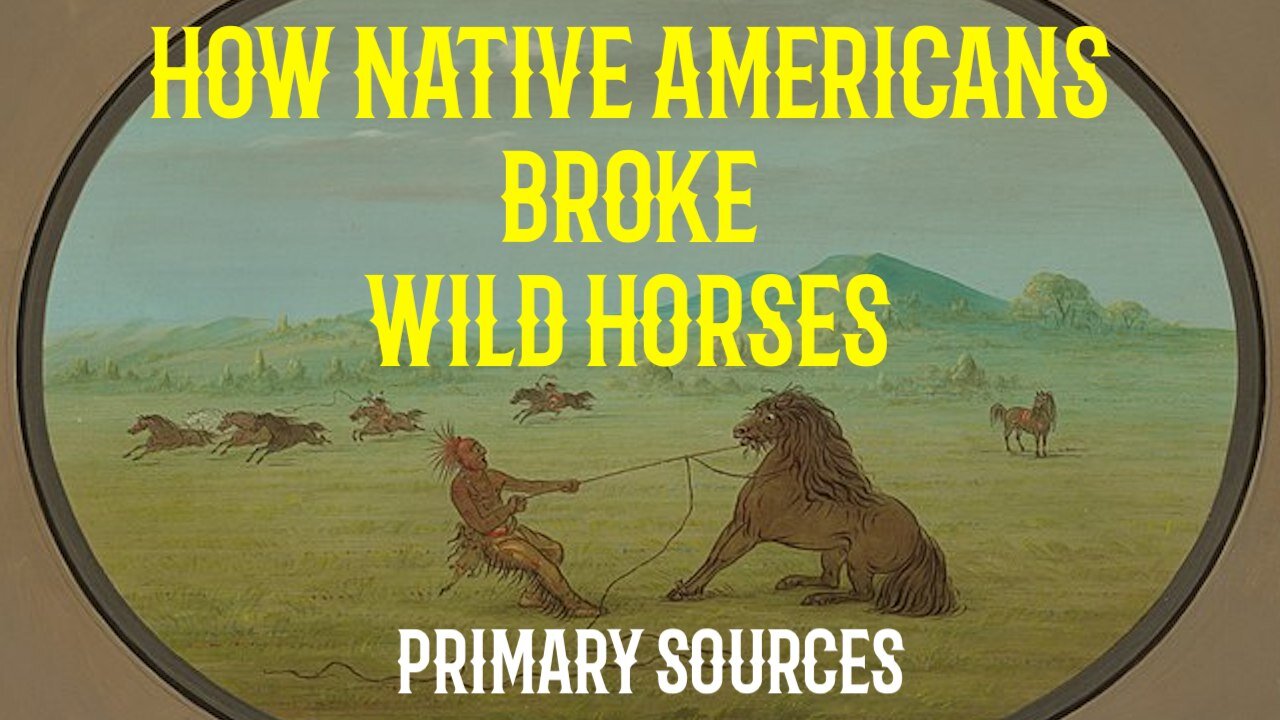How Native Americans Broke Wild Horses - Primary Sources
Anyone who has experience with horses will surely appreciate these primary sources describing how Native Americans broke wild horses.
Horses are arguably one of the greatest animals humans ever domesticated. Strong and fast, these intelligent animals have had profound impacts on the societies they touched. From the Mongol steppes and the deserts of North Africa, to the lush forests of mainland Europe; horses were used widely in the old world for lots of reasons. When European breeds were introduced to North America in the 15th and 16th century they slowly began to work their way into the fabric of many Native American societies that gained access to them. As it did with other societies, the horse became the central feature in many Native cultures. This was particularly evident in the Great Plains region.
One of the more interesting aspects of Native American’s relationship with the horse was how they were able to train, or “break”, them for riding. Today, most horse trainers have access to specialty pens, tools, and equipment to get horses started under saddle. However, back in the frontier days, the methods of starting horses were quite a bit different. While methods likely varied from place to place, there are a few primary sources from the 1830s describing how Native Americans broke wild horses. These sources reveal quite a lot about the realities of life in the 19th century.
Continue scrolling to see two primary sources from the 1830s. You can also watch this Youtube video I made of an audio version describing how Native Americans broke wild horses.
Teachers can download this free PDF to help students analyze the primary sources.
Warren Ferris - 1830 (Flathead Tribe)
“During our journey, we saw wild horses gallopping in bands over the plains, almost daily; several of which, were caught by our Indians and domesticated, with but little trouble. They pursued them, on very fleet horses until sufficiently near to "leash" them; when thus captured, they exert all their remaining force in fruitless endeavors to escape; and finally become gentle from exhaustion. In this situation they are bridled, mounted, and then, whipped to action. Other horses are usually rode before, that they may be induced to follow. If then they move forward gently, they are caressed by the rider; but on the contrary, most cruelly beaten if they refuse to proceed, or act otherwise unruly; a few day's practice seldom fails to render them quite docile and obedient. The process of catching wild horses, by throwing a noose over the head, is here called "leashing," and all Indians in the mountains, as well as those who rove in the plains east of them, are quite expert at it; although in this respect, far behind the inhabitants of New Mexico…”
George Catlin - 1832 (Commanche Tribe)
“The usual mode of taking the wild horses, is, by throwing the laso, whilst pursuing them at full speed, and dropping a noose over their necks, by which their speed is soon checked, and they are "choked down." The laso is a thong of rawhide, some ten or fifteen yards in length, twisted or braided, with a noose fixed at the end of it; which, when the coil of the laso is thrown out, drops with great certainty over the neck of the animal, which is soon conquered.
The Indian, when he starts for a wild horse, mounts one of the fleetest he can get, and coiling his laso on his arm, starts off under the "full whip", till he can enter the band, when he soon gets it over the neck of one of the number; when he instantly dismounts, leaving his own horse, and runs as fast as he can, letting the laso pass out gradually and carefully through his hands, until the horse falls for want of breath, and lies helpless on the ground; at which time the Indian advances slowly towards the horse's head, keeping his laso tight upon its neck, until he fastens a pair of hobbles on the animal's two forefeet, and also loosens the laso (giving the horse chance to breathe), and gives it a noose around the under jaw, by which he gets great power over the affrighted animal, which is rearing and plunging when it gets breath; and by which, as he advances, hand over hand, towards the horse's nose, he is able to hold it down and prevent it from throwing itself over on its back, at the hazard of its limbs. By this means he gradually advances, until he is able to place his hand on the animal's nose, and over its eyes; and at length to breathe in its nostrils, when it soon becomes docile and conquered; so that he has little else to do than to remove the hobbles from its feet, and lead or ride it into camp.”
UP NEXT: A LAKOTA BUFFALO HUNTING STORY
As you can tell, Native Americans broke wild horses basically by running the horse until they could get close enough to rope it. Once roped, they would basically choke it down to the point where they could ride it. George Catlin has made several pictures depicting the scene that match perfectly the description he gives.
It’s important to note that different Native American tribes may have broke their horses differently, and even the tribes described may have had alternative methods as well. You can imagine the method would have been highly dangerous but getting another horse would have been worth the effort. The two tribes identified above used the animals extensively and the addition of horses transformed their way of life it has for societies for thousands of years.


